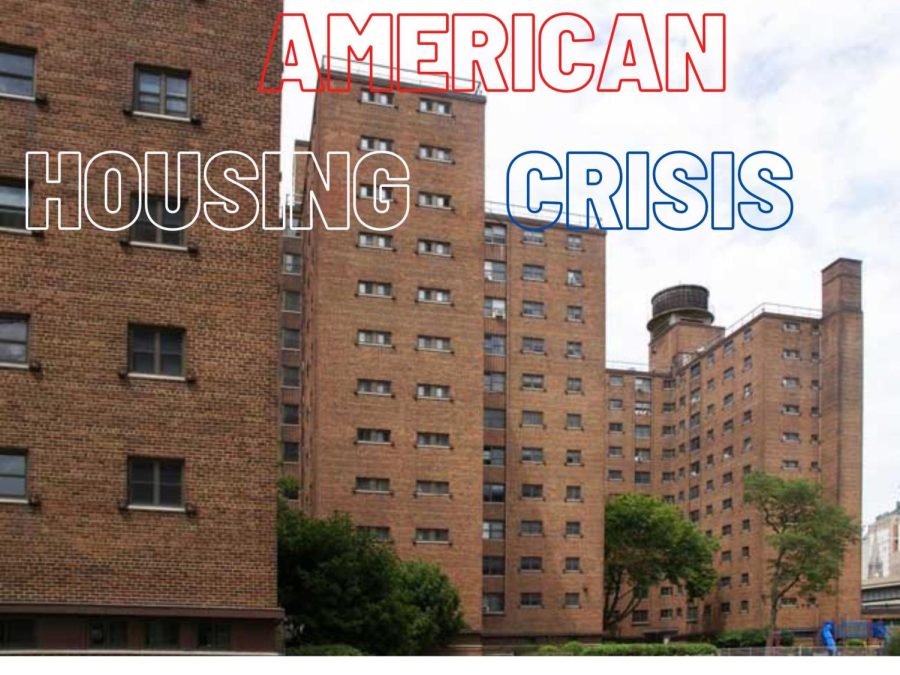The shelter crisis: American housing shortage
About 3,200 people in Atlanta face homelessness and food insecurity. With a growing population, access to a form of housing continuously becomes scarce. Those who did not previously experience this poverty now face that possibility every day. The COVID-19 pandemic also plays a role in the current financial circumstance for American households.
March 17, 2022
With a rising population in the U.S., housing has become scarce. Economic factors such as a pandemic, inflation and indefinite uncertainty contribute to this complex issue. Homes in Cobb County averaged $1,255 for monthly rent in 2019. That price increased by 7.91%+ over the last three years. Similar to Cobb County, the rent prices in Fulton County (Atlanta) skyrocketed. If rent continues to rise, what will those of lower socioeconomic status do next?
In Atlanta alone, over 3,200 homeless people roam the streets without shelter. Due to displacement, the city’s homeless population now lives in a “tent city”. The tents cover enormous amounts of land and allowed a community of people to form over the years. Atlanta rental apartments now average monthly payments of $1,600 for a one-bedroom and $2,080 for a two-bedroom. One may argue that subsidized housing can serve as an option during this difficult economic time. However, the waiting list has shot up while the quality of the housing has plummeted.
345 public housing units exist in Georgia and only eight of those properties qualify for section-8 vouchers. The poverty rate in the state comes to 16.9%, which means that one out of every 5.9 residents of Georgia lives in poverty, not to mention the lengthy waitlist that potential renters must encounter when inquiring about affordable housing. Those lists can range from six months to three years in several areas. Accessing the resources needed has become increasingly difficult for those who need the help.
This issue has affected even those of past economic stability. Those who once lived in a nice suburban home now face the possibility of subsidized housing or homelessness. While someone from the suburbs may look well polished on the outside, they may experience, homelessness, food insecurity a form of abuse at home. Philosophers and economists call this invisible poverty. A high school student who looks well taken care of and wears the latest fashion at school may struggle with living on the street or food insecurity when they go “home”. The solidified stigma of food stamps, government housing or any type of assistance further pushes invisible poverty and discourages people to ask for help.
Cobb County, a considerably middle-class area, offers close to no resources for those who fall below the poverty line. Must Ministries, located in Marietta, remains one of the only resources for poor and battered women in the area aside from local churches. Rental assistance programs and homeless shelters exist in “urban” areas such as Atlanta, but not in the surrounding areas. The lack of accessible resources in areas such as Cobb County further adds to the existing prejudice and stigma.
“My parents recently sold our home, but I had no worries about where we would live next. However, I understand that not everyone around me is in that same position. We go to school with people who own beach homes and others who struggle to pay rent every month. There’s a huge mix of people from different backgrounds and not everyone has access to certain resources like others do,” senior Erica Holder said.
Society places a financial prejudice on both inner-city and suburban places. One may assume that someone from an inner-city either possesses a large sum of money or lives below the poverty line. For skeptics, a middle class does not visibly exist to those who criticize them. As a result, assistance programs exist in abundance for those residents. On the other hand, people who live in modern suburbia face standards they can almost no longer meet. Spanning back to the 1940s (post-war) only those of the middle class resided in these types of neighborhoods. Today, families of different socioeconomic backgrounds account for suburban populations. People in these areas typically do not qualify for the same resources that exist in other places.
Increasing the number of resources and subsidies can dramatically benefit everyone involved. Adding more would not only help those who need it, but it would also not take away from those who already gained help from those resources. However, in order for this to work, the government would need to reallocate budgets and money flow. This seems highly unlikely considering that the U.S. government has set a military budget of $752.9 billion. This means that the majority of the U.S. budget goes toward defense and that leaves an inadequate amount to properly aid those living in poverty. Until the funds become available, the American housing crisis will continue.







